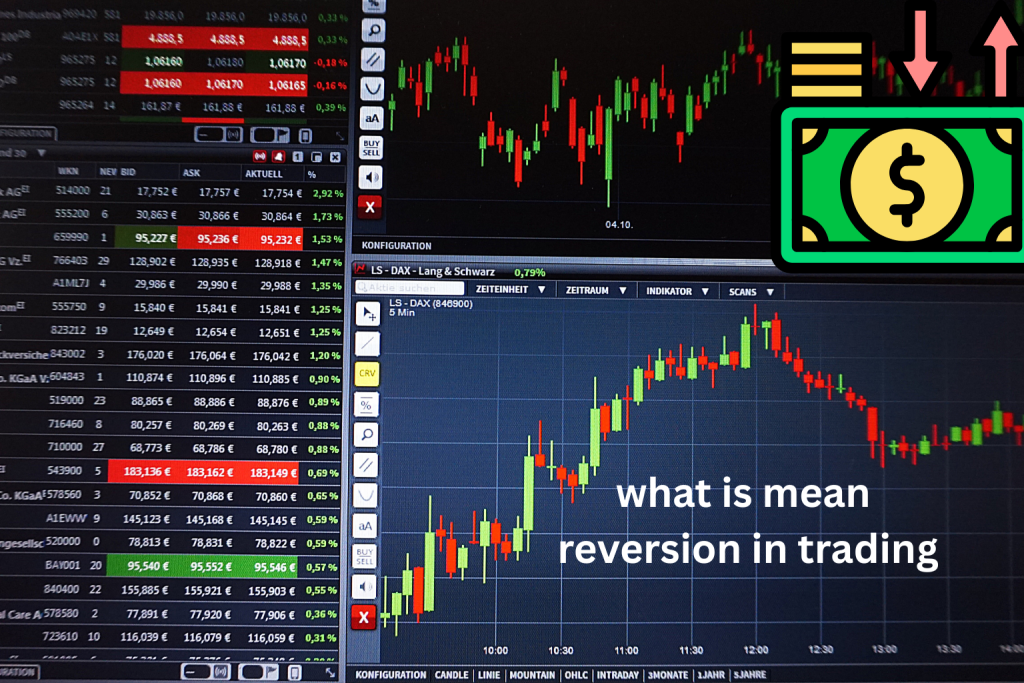What Is Mean Reversion in Trading? Strategy, Examples & Tools

Markets move in cycles—but not always in straight lines. Often, prices stretch too far and then snap back to a central average. That’s the core idea behind mean reversion in trading.
This blog explains how mean reversion works, why it matters, and how you can use it in your strategy to find low-risk, high-probability trades.
What Is Mean Reversion?
Mean reversion is a trading concept that assumes prices tend to return to their average (mean) over time. When an asset becomes overbought or oversold, it’s likely to revert back to its historical average or trend line.
Traders using this strategy look for price extremes—then bet on a reversal back toward the mean.
Key Concepts Behind Mean Reversion
- Mean (Average): The central value a stock price tends to oscillate around
- Deviation: The distance between the current price and the average
- Reversion: The price movement back toward the mean
- Indicators Used: Moving averages, Bollinger Bands, RSI, standard deviation
Example of Mean Reversion
Imagine a stock that usually trades around $100. If the price shoots up to $120 quickly without news or volume, a mean reversion trader may anticipate a pullback back to $100.
Conversely, if it drops to $80 during a market panic, the trader might see it as an opportunity to buy.
Common Mean Reversion Strategies
1. Moving Average Pullback
- Price deviates from the moving average
- Entry when price crosses back toward the average
- Use 20/50-day SMAs or EMAs
2. Bollinger Band Reversion
- Buy when price hits lower band, sell near the upper band
- Bands automatically adjust with volatility
3. RSI-Based Reversion
- Use RSI (Relative Strength Index) to spot overbought/oversold levels
- Buy when RSI < 30, sell when RSI > 70 (with confirmation)
Pros and Cons of Mean Reversion
| Pros | Cons |
|---|---|
| High probability if timed well | Can fail in trending markets |
| Works well in sideways markets | False reversals may occur |
| Risk-reward can be favorable | Requires precise entries and stops |
When Does Mean Reversion Work Best?
- Range-bound markets
- Low volatility environments
- Stocks with historical price stability
- Oversold/overbought conditions on technical indicators
Tips for Successful Mean Reversion Trading
- Combine with volume analysis for confirmation
- Use stop-losses to avoid extended trends against you
- Backtest your system on multiple assets and timeframes
- Avoid during major news events or earnings releases
- Use confluence: look for multiple signals lining up (e.g., RSI + MA + support)
Final Thoughts
Mean reversion in trading is a powerful strategy when used in the right market conditions. It helps identify low-risk entry points where the price is likely to snap back to a more “normal” level. But like any strategy, it requires discipline, backtesting, and proper risk control.
If you like trading with logic and structure, mean reversion might be a strategy worth mastering.
FAQs
Q1. Is mean reversion trading suitable for beginners?
Yes, especially with proper education and paper trading before going live.
Q2. Can mean reversion be used in crypto or forex?
Absolutely. It works in all liquid markets with historical price behavior.
Q3. What’s the best timeframe for mean reversion?
It works on intraday, daily, and weekly charts—but higher timeframes give more reliable signals.
Q4. Does mean reversion work in trending markets?
Not usually. It’s best used in sideways or consolidating markets.
Q5. Can I automate mean reversion strategies?
Yes, many platforms allow coding or using bots to execute these strategies.